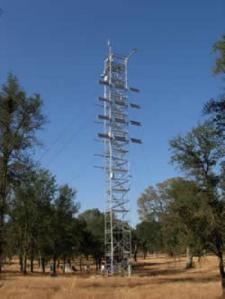
Woods Hole Oceanographic Institution’s Jessica Tierney has patiently produced a record of rainfall in East Africa reaching back 40,000 years, from sediment collected from pirate- and extremist-infested waters. Image copyright: Tom Kleindinst, Woods Hole Oceanographic Institution
Having dodged pirates and extremists, and slogged for two years to interpret the record collected, US scientists have shown how abruptly rainy climates in East Africa come and go. Jessica Tierney puzzled out a rainfall record back to the last ice age from mud collected in one of the last research cruises to brave the Horn of Africa. “The region goes from being pretty humid to very arid in hundreds of years,” Jessica, who works at Woods Hole Oceanographic Institution (WHOI) in Massachusetts, told me. “That’s important because there’s a threshold behaviour in its rainfall. We need to better understand what drives those thresholds, and when we’d expect to be pushed over one, as it has huge implications for predicting drought and famine in the region.”
Long interested in ancient East African climate, Jessica wanted to study the Horn of Africa area, which includes Ethiopia and Somalia, because the climate there is very sensitive and variable. But its dry conditions rule out many options scientists use to build historical records from ice, cave deposits, sediments from lake beds or tree rings. So in 2010, she started working with Peter deMenocal at Lamont-Doherty Earth Observatory in New York, who collected sea bed sediments from the area in April and May 2001.
“We boarded ship in Dar Es Salaam in Tanzania and our cruise was to end in Port Said, in Egypt,” Peter told me. That took the team down the Somali coast and into the Gulf of Aden, where a few months earlier suicide bombers killed 17 sailors aboard the USS Cole. Though the scientists were worried, the captain of their Dutch research ship, R/V Pelagia was vigilant. “He had ordered radio silence, and we actually turned off all our lights on the ship at night, even navigation lights,” Peter recalled. “He had also put in orders for us to train on what to do in case we were boarded.”










